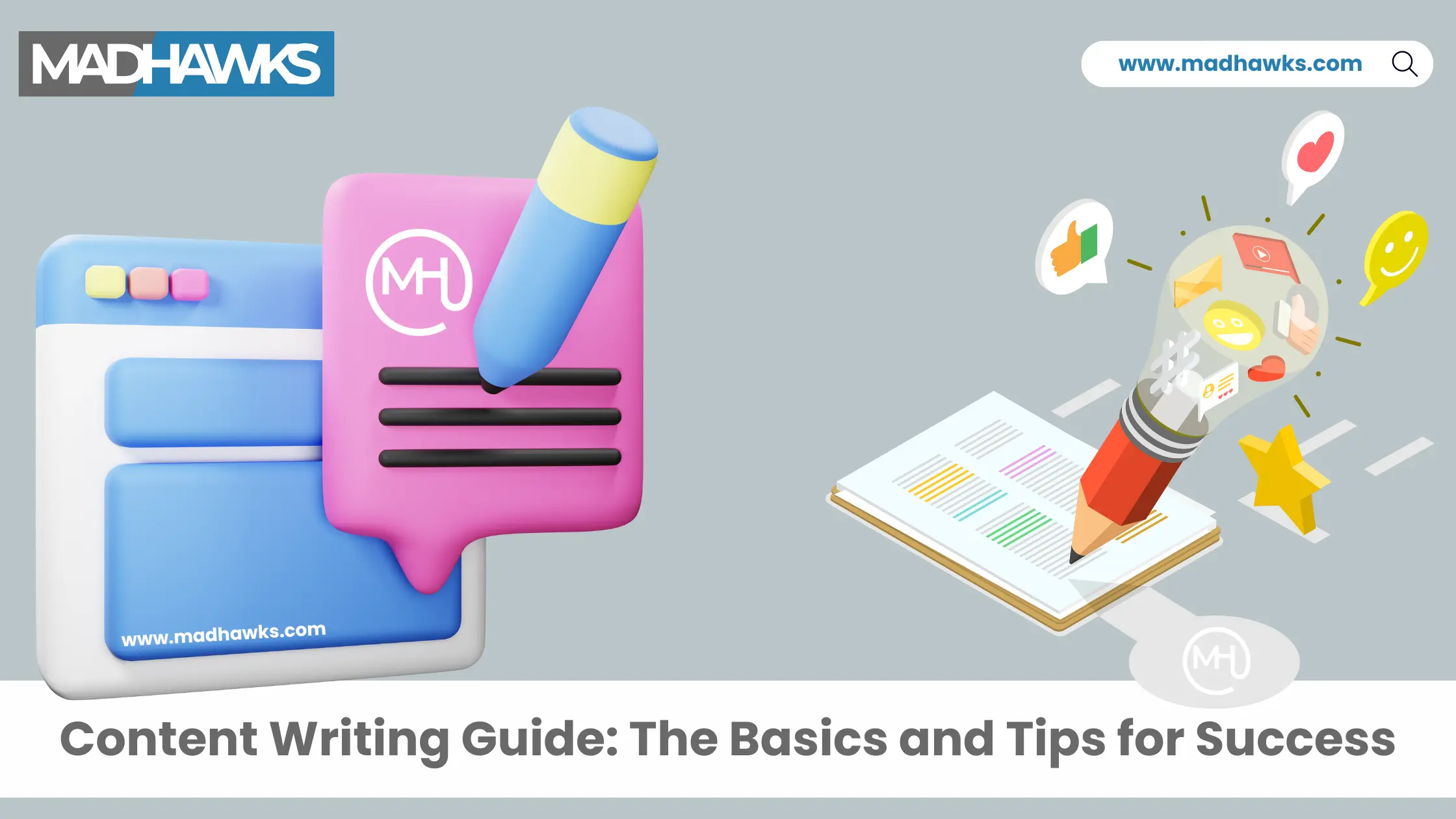Writing may be easy but when you are writing content for digital marketing purposes, it’s not as easy as it may sound. Content writers need to craft words carefully to establish a connection between a brand and its target audience. Whether creating content for B2B or B2C audiences, there are plenty of challenges you might encounter. Content is created to be consumed by the audience of a brand. The better the quality of content, the higher the trust between the brand and its audience.
Not only this, but high-quality content also builds trust with search engines and improves your website’s authority. But to create high-quality content, you must know what content writing actually is and how to do it for the best results. In this article, we will discuss some best content writing practices and tips every marketer should follow:
What is Content Writing?
Content writing is the process of developing content for the internet. It covers blog posts, landing pages, newsletters, ebooks, social media copies, and any other type of content that is created for digital marketing purposes. With this online content, brands aim to build a connection with their target audience and make potential customers aware of their business and offerings.
Content writers are responsible for developing content around the most relevant topics by doing thorough research, distributing content, editing content to fulfill SEO requirements, and planning the content strategy. In simple words, content writers are like the storytellers of a brand who convey the message of the brand to its target audience and encourage readers to perform a desired action.
Importance of Content Writing in SEO and Digital Marketing
The demand for content writers is now higher than ever before. This is because more than 70% of marketers are now investing in content marketing. However, the content demand can vary for every business. While some businesses only focus on social media, others use a comprehensive strategy to distribute content through websites, social media, and other channels. Whichever channel you use, it’s important to make your target audience aware of your brand’s existence.
Distributing high-quality content is essential to represent your brand while attracting and engaging with your target audience. Even search engine optimization strategies cannot work well without good content as search engines now prioritize quality and user experience. If done properly, content writing can help convert your readers into potential leads and then into paying customers of your brand. Therefore, content writing become crucial for digital marketers who want to establish a strong brand presence online.
Content Writing Tips to Follow
Here are some effective content writing tips that will help you succeed in the field:
1. Do Research to Pick The Right Topic
Your first step in content writing should be to choose the right topic to write about. You can perform keyword research or use topic research tools to find topics that are relevant to your industry and your target audience. Writing high-quality content about your industry-specific topics will help you establish your brand image as an industry expert and build higher authority.
Therefore, it’s crucial to ensure that you know what you are writing about. Google prioritizes content that demonstrates EEAT (Experience, Expertise, Authoritativeness, and Trustworthiness). So, just make sure that you perform good research to find topics that can help you build authority in your industry.
2. Writing Original and Helpful Content
You can read already published articles on your competitors’ websites or other sites to understand the topic but don’t just replicate what they have written. Creating original and unique content is extremely important to appear in the search engine results pages (SERPs). You can read different articles, but make sure to structure the content in your own style and write the information in your own words.
Copied content neither drives engagement nor is considered good by search engines. Think about how you can combine information from different sources and add your own insights to it to generate a helpful piece of content that fulfills your audience’s requirements.
3. Go Beyond What You Find Online
Once you have gone through the articles you find online, you can create a rough outline for your content. This outline should include the information that you have already found online. But that’s not all. Try to maintain a 60:40 ratio between the content that you find online and content that you write out of your own insights.
If you have good knowledge of the topic you are writing about, you can add some more information based on your past experiences or knowledge. If you have only a little knowledge of the topic, you can expand your research beyond the online resources. Look for case studies, real-life examples, or user experiences to make your content unique and stand out from your competitors.
4. Write Catchy Headlines
A catchy headline or a good hook line at the beginning of the content can be very effective in attracting the reader’s attention. Try to write a title that directly addresses the user or appeals to the user’s needs. Even if the title is generic, you can start the content with a hook line. The first few sentences of an article or blog post play a crucial role in determining whether the reader will stay or leave the page. If you somehow manage to build a connection with the readers through the first few lines, they will most likely read the entire article.
5. Structure Your Content in The Right Manner
Online content can be found in various formats, especially website content. Different formats can be ideal for distributing different types of information. Some of the best-performing content formats are given below along with what type of content they are ideal for:
| Content Format | Ideal For |
|---|---|
| Short-form content (up to 1,000 words) | Blog posts or articles covering highly specific topics |
| Long-form content (over 1,000 words) | Blog posts or articles covering broad topics in depth (most of the high-performing articles have an average word count of 1,152 words, as per SEMrush) |
| Case Studies | Covering customers’ achievements with a specific brand or its products/services in a fact-based and analytical manner |
| White Papers | In-depth reports that make readers aware of a particular product or service (most widely used in B2B marketing) |
| Gated Content | Content that is only accessible to selected users, usually the ones who have filled out a lead generation form |
| Research Reports | Detailed reports that cover the findings or original studies. |
| User Manuals/Product Guides | Manuals that help customers understand a product and its usage |
To get an idea about what type of content performs the best for a particular topic, you can search that topic on Google and see the top results. Sometimes, it’s also ideal to decide on the format first and then choose the topic accordingly.
6. Add Relevant Keywords
In order to make sure that your content is well-optimized for search engines, make sure to incorporate relevant keywords to it. This is where content writers need to collaborate with SEO professionals. Or if you have some basic knowledge about keyword research tools, you can find relevant keywords on your own. Add the keywords in prominent positions like titles, subheadings, image alt texts, etc, to improve the visibility of your content. Keep in mind that you don’t overwhelm your content with keywords. Just add the keyword where it seems relevant. Keyword stuffing should be strictly avoided when your aim is to generate high-quality content.
7. Consider Your Tone of Voice
The tone of voice refers to the way you communicate an idea to your audience. It’s the style behind your writing, which should depend on your target audience, content format, and your brand’s identity. Depending on these factors, the tone of voice can vary even when you are delivering the same information. Decide whether you want to write in a casual, formal, or neutral tone, and follow the same tone in every piece of content you write for your brand.
8. Incorporate Multimedia Components to Keep Readers Engaged
It’s common for readers to lose interest after reading a few paragraphs, especially in the case of long-form articles. To make sure this doesn’t happen, you can incorporate multimedia content like infographics, videos, or images, in between your content. This breaks your content into different sections and helps keep the readers engaged throughout the article.
9. Make Sure That The Key Points of Your Content are Easily Visible
Readers often skip words and even paragraphs in order to find just the relevant information. Therefore, it becomes necessary to highlight the key points of your content. You can do it by writing subheadings, highlighting facts or most important information with bold font, or by incorporating short paragraphs in between. When the key points are not clearly visible, users may find your content worthless and leave it midway.
10. Check for Spelling and Grammer Errors
The accuracy of the content also matters a lot. Before you submit the final draft of an article or publish any type of content, make sure to proofread it for spelling and grammatical errors. You can even use tools like Grammarly as they will save you a lot of time as well as effort. Content with basic spelling or grammar errors is less likely to perform well in search engines.
11. Consider The Readability Score of Your Content
The readability score of a piece of content measures how easy or difficult it is to read and understand that content. The higher the readability score, the more understandable your content. Checking the readability score helps you ensure that your content is suitable for the target audience and is easy to understand. A readability score of 60 or higher is usually considered good. You can find several online tools and use them to check the readability score of your content.
12. Include Relevant CTAs
Just writing the content is not enough, you also need to keep in mind the end goal of your business. You also have to focus on converting your readers into potential leads or customers. Therefore, it’s essential to include CTAs (Call-to-Actions) throughout your content. But make sure that the CTAs are relevant to the readers and do not hamper their reading experience.
Make The Most Out of Content Writing With MadHawks
Content writing, when done correctly, can strengthen your digital marketing efforts. Even to succeed in SEO, you need high-quality content that addresses the right audience. Today when many brands are trying to succeed with AI-generated content, MadHawks still believes in human expertise. Our content writing professionals can develop 100% human content after doing thorough research on the topic and structuring the content in such a way that it directly appeals to your target audience. If you need any further assistance in content writing or are looking for a content marketing and SEO agency to improve your online presence, contact MadHawks today!







